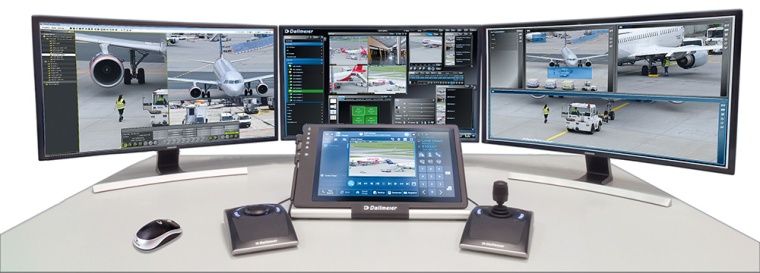Surveillance Solutions for a Better Overview at Airports
The police suddenly spring into action at an airport with a consequent boarding stop, the evacuation of whole areas and the cancellation of flights: infringements of the security ...

The police suddenly spring into action at an airport – with a consequent boarding stop, the evacuation of whole areas and the cancellation of flights: infringements of the security rules often have far-reaching consequences. The cause is often an unnecessary security breach. This can be prevented, for example, by using surveillance solutions from Dallmeier. Christoph Kreis from Dallmeier explains how these could look.
GIT SECURITY: We’ve seen reports about a number of airports having to be temporarily closed due to unnecessary security breaches. How can Dallmeier’s surveillance solutions help to optimize the airport’s security overview?
Christoph Kreis: The recent incidents do indeed raise questions about how technology can help to quickly resolve such events. Two aspects are at stake: preventing or at least minimizing disruptions to airport operations and, above all, ensuring security if the intruder is not a harmless tourist. The keyword here is situational awareness: in the recent incidents, there was no way to quickly get an overall view of the situation and immediately track the individual. The patented Dallmeier Panomera camera technology addresses precisely this challenge: It enables the tracking of objects over large spatial contexts with a minimum number of screens for the operator. Especially in combination with the 360-degree version of the Panomera, Dallmeier solutions offer a tremendous advantage here.
How does the layout of a modern airport create challenges for security surveillance systems?
Christoph Kreis: Modern airport layouts are of course also optimized from a security point of view, as the full segregation of arrival and departure passengers and other measures show. Still, the design of an airport must take certain functional requirements into account. This means, for example, a rather narrowly defined security area behind which the ‚terrain‘ quickly becomes unclear. Changing this has its limitations, since the architecture must serve the purpose of distributing the passengers to many different gates, provide access to shopping areas etc. Complex architectural structures naturally reduce the clarity and make it more difficult to quickly assess the situation and to continuously track objects. This makes it all the more important that security technology can adapt to these conditions as the architecture can do it only to a very limited extent.
Can you explain Dallmeier’s tracking solution and how it can be utilized in the airport environment?
Christoph Kreis: At the heart of the Dallmeier tracking solution is our patented Panomera technology: a camera system with high-precision optics creates a high-resolution overall image, with which even the largest areas can be viewed at a glance. In the city of Cologne, for example, we cover 9,000 square meters with just 8 Panomeras in a defined resolution density of 200 pixels/m. Operators can now always keep an eye on the overall picture to track an object, and simultaneously track any number of human objects in sync with the desired zoom factor. No image information is lost as all functions can be processed in time shift mode – in contrast to the fragmented and uncoordinated processing of previous single-sensor and PTZ technology. In this way, the overall situation is always under control, no matter how large the areas to be monitored are. The holistic approach of the Dallmeier system solution already includes the possibility of retrofitting software with AI support to keep existing systems future-proof for years to come.
Do you have any airport success stories that Dallmeier has worked on that you can share with us?
Christoph Kreis: Dallmeier has been offering solutions for specific airport areas such as runways, the apron, exterior and interior terminal areas, check-in, high-security areas or car parks for many years. We maintain a huge customer base in the airport sector with customers including both major international hubs such as Frankfurt, Domodedovo, Sheremetjevo and Copenhagen as well as medium-sized airports such as Bristol, Kazan or Prague.












